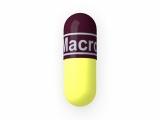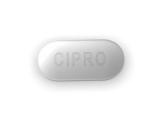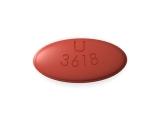
The genitourinary system is a complex of organs that are anatomically and physiologically related. Therefore, urinary tract infectious (UTI) can affect the urethra, bladder and ureter, kidneys and prostate gland.
Most often, the disease is caused by bacteria, less commonly by pathogenic fungi, viruses and parasites. Urinary tract infection may be asymptomatic or have a clear clinical picture. Drug therapy for UTI usually includes antibiotics They have a systemic effect and are effective in the infectious origin of the disease. Basically, these are oral antibiotics. They may be inexpensive but no less effective.
If you do not pay attention to the signs of the disease and cure it in time, a urinary tract infection will be complicated by an abscess of the renal cortex, perinephric abscess, pyonephrosis, gangrenous pyelonephritis or chronic pyelonephritis.
What is the best antibiotics for UTI?
Antibiotic treatment for UTI is prescribed by a doctor, because only a medical specialist knows which drugs will be most effective taking into account the main pathogen. For this, a study is always carried out to identify the microbial factor. Only then antibiotic treatment will be truly effective.
Doctors usually prescribe antibiotics for a period of 5 to 10 days. If improvement is not observed during the first 3 days from the start of antibiotic treatment, the drugs are changed. Most often, the microflora of the bladder is sensitive to the following antibiotics:
The best antibacterial agent for the treatment of UTI is a drug that will be non-toxic, highly effective and well tolerated by the patient. All of the mentioned agents have possess these effects.
What are other treatments for UTI?
If you have an increase in body temperature or have chills, it is necessary to take antipyretic drugs (paracetamol, aspirin, ibuprophen, etc.)
In addition to the doctor’s prescription, you can use home methods that will help you recover more quickly:
- Drink plenty of fluids, especially water. It is important to stimulate urination and flush bacteria out of the body;
- Drink cranberry juice. It is scientifically proven that cranberry juice is effective against UTI, it contains substances that make it difficult for bacteria to grow in the urinary tract and helps to wash them out.
Some patients may require surgical treatment, so you should not neglect the additional examination methods prescribed by the doctor.
What is a urinary tract infection?
Urinary tract infection is characterized by the presence of bacteria, viruses, fungi or parasites in the urinary tract, which cause inflammation and form a clinical picture of the disease. To better understand the disease, you need to imagine the anatomy and physiology of the genitourinary system. The kidneys are a paired bean-shaped organ that is located to the left and right of the spinal column. The task of the kidneys is to cleanse the blood and regulate the chemical balance in the body.
The kidney acts as a filter that filters out ballast substances from blood and plasma: nitrogen metabolism products, toxins and drugs, foreign elements and inorganic compounds. All these substances accumulate in the urine, which slowly flows down the ureters into the bladder (1 ml per 1 minute). The bladder is a hollow organ with a volume of 500 to 700 ml.
When enough urine accumulates in the bladder, there is a urge to go to the toilet. This process is partially regulated by human consciousness. Sphincters open in the bladder, the detrusor muscle contracts – urine flows under pressure from the bladder into the urethra, and then into the environment.
Doctors divide urinary tract infections into two groups:
- upper urinary tract infection. This bacterial kidney disease is pyelonephritis;
- lower urinary tract infections. These include cystitis (inflammation of the bladder), urethritis (inflammation of the urethra) and prostatitis (inflammation of the prostate).
This is a conditional division. In clinical practice, it is difficult to identify the specific location of the infection because most often the infection affects several anatomical structures at the same time.
Most often, the patients are aged 20 to 50. Women suffer from an infection of the genitourinary organs 50 times more often than men. They mainly suffer from cystitis and pyelonephritis. Men’s infections are prostatitis and urethritis.
Urinary tract infections may be uncomplicated and complicated. Pyelonephritis and cystitis are considered uncomplicated if they develop in mature women before menopause without birth defects in the anatomy of the urinary tract.
Cystitis or pyelonephritis are considered complicated if they fit the following criteria:
- a person has defects in the anatomy of the urinary tract;
- there is a secondary disease that aggravates the course of a urinary tract infection, for example, diabetes mellitus or immunodeficiency;
- if the patient is under 18 years old or is a pregnant woman.
What causes UTI?
The urinary tract is normally sterile – it does not have bacteria or viruses. Despite the frequent ingestion of bacteria from the rectum (improper hygiene, migration of microorganisms), local protective mechanisms keep the urinary tract completely clean. For example, the main protective force is urination, which cleans the urinary tract of bacteria. Auxiliary mechanisms are acid reaction of urine, vesicourethral valve, mucous membranes and local immunity.
In 95% of cases, an infection of the genitourinary organs is caused by bacteria due to the fact that they rise through the urinary tract upwards: from the urethra to the bladder and ureter, and then the bacteria reach the kidneys. The root of infection can be hematogenous.
In the remaining 5% of cases, infectious diseases are caused by pathogenic fungi (mainly from the genus Candida). Less common pathogens are mycobacterium tuberculosis, parasites (filariasis, schistosomatosis, leishmaniasis, trichomoniasis and malaria) and viruses. Fungi and mycobacteria infect people with weak immunity, those who have congenital defects of the urinary tract and diabetes.
The most common routes of infection are through sexual contact and improper hygiene of the urogenital organs.
Risk factors that increase the likelihood of infection:
- unprotected sex or a new sexual partner;
- prolonged use of antibiotics;
- the use of a diaphragm or spermicides as contraception;
- a relative with an UTI in the first degree of kinship;
- previous UTI.
The use ofspermicides or antibiotics increases the risk of infection due to the fact that the vaginal environment changes and additional conditions for the growth of Escherichia coli are created. In women over 70, infection can occur due to fecal incontinence.
Risk factors include congenital abnormalities, which causes vesicoureteral reflux. This is a pathology in which urine from the bladder is spontaneously thrown back into the ureter. In 40% of cases, this is observed in children.
You can get infected after surgery and as a result of medical instrumental procedures: catheterization, cystoscopy or wall placement.
What are the UTI symptoms?
Elderly patients and patients with a neurogenic bladder or a permanently installed catheter may initially experience sepsis and delirium, rather than symptoms related to the urinary system.
If symptoms are present, they may not correspond to the location of the infection within the urinary tract, as there is a significant “overlap”; nevertheless, some generalizations may be useful.
The main symptoms of urethritis dysuria and discharge from the urethra (mainly in men). The discharge may be purulent, whitish or mucous. Such characteristics of the discharge, such as the amount of pus, do not allow to confidently differentiate gonococcal urethritis from non-gonococcal.
Cystitis usually occurs suddenly, its symptoms are pollakiuria, peremptory urges and burning or painful urination in small portions of urine. Nocturia is often observed in combination with pain in the suprapubic region and lower lumbar. The urine is often cloudy and microscopic (or rarely significant) hematuria may occur. Subfebrile fever may develop. Pneumaturia (the presence of air in the urine) can occur when the infection occurs as a result of a gallbladder or vesicle-vaginal fistula, or with emphysema cystitis.
In acute pyelonephritis, the symptoms may be the same as with cystitis. A third of patients have pollakiuria and dysuria. However, with pyelonephritis, symptoms usually include chills, fever, lower back pain, cramping abdominal pain, nausea, and vomiting. If there is no or slightly pronounced rigidity of the muscles of the abdominal wall, sometimes it is possible to palpate painful, enlarged kidneys. Usually, pain on percussion of the rib-vertebral angle is detected on the side of inflammation. In children, the symptoms of urinary tract infections are often scanty and less specific.
What are other possible causes of painful urination?
Painful and difficult urination may not only be caused by urinary tract infectious. You can have painful urination even if the urinary tract is completely sterile.
Other possible causes of painful and unpleasant urination:
- stones in the kidneys;
- ovarian cysts;
- side effects of cancer chemotherapy;
- vaginal infections;
- vaginal irritation, for example, if you have sex without lubrication;
- hypersensitivity to artificial lubrication, soap, toilet paper and other hygiene products.
Try replacing them or stop using them. If the burning sensation and discomfort during urination are gone, most likely it was associated with the factors above. Even if there is no more pain, you still need to go to the doctor and be examined.
Do I need to see a doctor?
Yes. Cystitis or urethritis are not terrible diseases. However, their consequences can lead to serious complications, and then surgery and prolonged conservative treatment will be required.
It is especially important to see a doctor if you have a recurrent urinary tract infection.
Watch a video below in which Dr. Kelly Casperson defines recurrent urinary tract infections and the diagnosis and management from a urologists perspective:
You need to tell your doctor about the symptoms, their dynamics and the likely causes (new sexual partner, sex without contraception, hypothermia). You should tell your doctor if you have other diseases, such as AIDS, diabetes, or congenital malformations of the urinary organs. These factors affect the choice of drug and treatment tactics.
Your doctor may find that troubled urination is associated with a vaginal infection. You will give a sampling of biological material and they send it to the laboratory for microscopic and bacterial examination. Laboratory results will indicate if there are fungi or other microorganisms in the vagina.
If pathogenic microorganisms are not found in the vagina, you may be asked to do a laboratory analysis of the biological material from the bladder.
How to test for UTI?
The basis for the diagnosis of UTI are laboratory tests. To confirm or detect the infection, the patient can be sent for the following tests:
- general blood test – makes it possible to identify the inflammatory process to increase ESR and white blood cells;
- general urinalysis – it shows protein in the presence of UTI. The results of a microscopic examination will give an increase in white blood cells and red blood cells. Urine of a sick person becomes cloudy and may acquire a pinkish color in case of bleeding;
- bacteriological diagnosis of urine helps identify the culprit of the infection. This is important for prescribing antibiotic therapy;
- special test strips for white blood cells help calculate their high concentration in the urine;
- test strips for nitrites make it possible to detect infection in the urinary tract.
Women should not take urine for analysis during menstruation, as the results may be false.
How to treat UTI?
Cystitis is usually treated with antibiotics. Before prescribing antibiotics, the doctor determines whether the patient has diseases that can lead to complications of cystitis, such as diabetes mellitus or a weakened immune system (which reduces a person’s ability to fight infection). In the presence of such diseases, treatment with potent antibiotics may be required for a longer period of time, especially because the infection can reoccur as soon as a person stops taking antibiotics. People with these diseases may also have infections caused by fungi or rare bacteria, and thus they may need other treatment than the most common antibiotics.
For women, oral antibiotic administration for 3 days is usually effective if the infection does not lead to complications, although some doctors prefer to give a single dose. To treat more persistent infections, an antibiotic is usually prescribed for 7–10 days. In men, cystitis is usually caused by prostatitis, and antibiotic treatment should last for several weeks.
How to prevent UTI?
Yes, cystitis, pyelonephritis and urethritis can be prevented. To do this, follow these recommendations:
- drink more water: you need to drink at least 1.5 liters of fluid per day; it is recommended to drink cranberry juice; however, if you are taking warfarin, you should consult your doctor before drinking cranberry juice;
- do not hold back the urge to the toilet; some children do not go to the toilet often, so explain to them why they need to urinate more often;
- after urination, wipe the external genitalia from front to back, and not vice versa, teach your children the same;
- the best natural way to prevent UTI after sex is to urinate;
- use a lubricant before sex and during sex; do not allow the vaginal mucosa to remain dry and irritated;
- wear loose clothing and underwear;
- uncircumcised men need to regularly wash their penis and especially the foreskin: smegma which accumulates under it is a good breeding ground for bacteria.
In the event that these methods of prevention are ineffective, the doctor will prescribe antibiotics in a prophylactic dose.
Trial continuous prevention lasts 6 months. If a urinary tract infection occurs 6 months after taking the medication, preventive treatment is extended for 2 years. The choice of antibiotics depends on the pathogen, your immunity and resistance.
If urinary tract infection is related to sex, postcoital prophylaxis is used. To prevent infection, a single dose of medication is usually taken.
Take care of yourselves and stay healthy!




